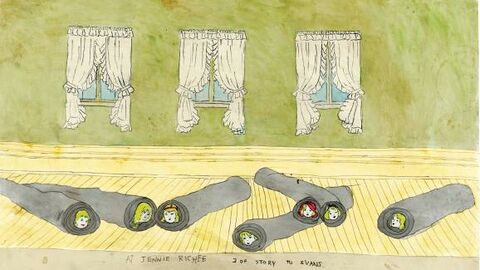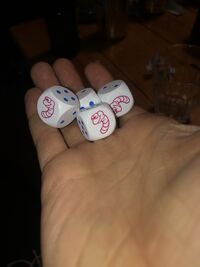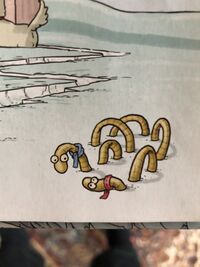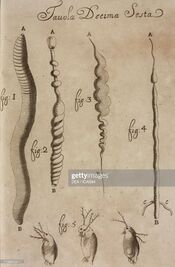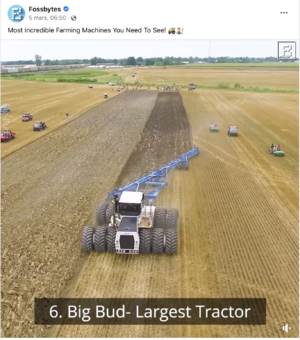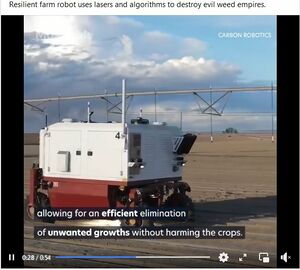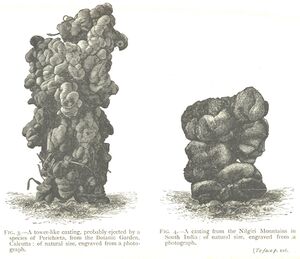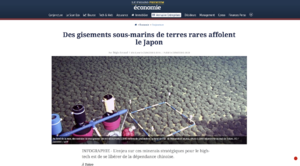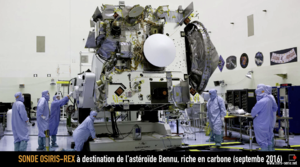User:Adèle: Difference between revisions
No edit summary |
No edit summary |
||
| (64 intermediate revisions by the same user not shown) | |||
| Line 1: | Line 1: | ||
[[File:Oups.JPG|Oups]] | [[File:Oups.JPG|Oups]][https://vimeo.com/user28224179 vimeo] // [https://pzwiki.wdka.nl/mediadesign/Adele-project_proposal Project proposal re-assessment] // [https://pzwiki.wdka.nl/mediadesign/Adele-project_proposal Project proposal] // [https://pzwiki.wdka.nl/mediadesign/Adele-thesis_outline Thesis outline] // [https://pzwiki.wdka.nl/mediadesign/User:Ad%C3%A8le/YEAR-ONE Random goods gathered and digested last year] <br><br> | ||
<br> | |||
== nutritious goods gathered this year: == | |||
<br> | |||
- " | ===== The earthy worms: ===== | ||
<br> | |||
[[File:AUSTRALIAN EARTHWORM-03.jpg|200px|australian earthworm]] [[File:HENRYDARGER.jpg|480px|HENRYDARGER]] [[File:PICK-OMINO.jpg|200px|pick-omino]] [[File:PERMAFROSTWORMS.jpg|200px|Permafrost-worms]] [[File:WORMS MORPHOLOGY.jpg|175px]]<br> | |||
<div style="font-size:0.7vw"> | |||
images from left to right: Australian earthworm - Henry Darger, At Jennie Richie are rescued by Evans, "They attempt to get away by rolling themselves in floor rugs" - Pic-omino dices - cold worms (not really possible, don't live in the really cold areas) - Plate XVI, di Francesco Redi, 1684, Florence | |||
</div> | |||
- | --> some types of earthworms: https://www.trees.com/gardening-and-landscaping/types-of-earthworms | ||
<br> | |||
===== Current occupations: ===== | |||
-The writing of a script in four chapters (As my thesis/8000 words)<br> | |||
-For each chapter, a series of drawings (how many? I don't know, it will depend on as little and as much as I manage to do)<br> | |||
-For each drawings a soundtrack (audio composition)<br> | |||
[[File:Screen Shot 2022-03-09 at 21.22.39.png|300px|thumb]] | |||
[[File:RESILIENT-ROBOTFARMERS.jpg|300px|thumb|resilient]] | |||
[[File:TUURRICULES-DARWIN.jpg|300px|thumb|Worm poo, Darwin]] | |||
[[File:TURRICULE MONEY.jpg|300px|thumb|money for labour]] | |||
[[File:Rare-earth-water.png|300px|thumb|privatizing the Oceans for Rare earths]] | |||
[[File:Rare-eath-space.png|300px|thumb|privatizing space for Rare earths, Hors-serie]]<br> | |||
In the script, I’ve decided to take worms as guides and a motivation for storytelling.<br> | |||
One of the few earthworm specialists in the world, Michel Bouché, stated that the reason nobody cares about earthworms is because they don’t cause any damage(2014)<br> | |||
As agriculture industrialize and digitize itself, through the development of complex mechanical and digital technologies and with the help of a strong commercial lobbying, <br> | |||
the main focus has been the visible part of the earth: the mass production. How to expand its scale? How to prevent invasive species from destroying the crops? and How to collect the goods efficiently on very large surfaces?<br> | |||
The development of these infrastructures have slowly been impoverishing the soils in the last fifty years due to chemicals and heavy weight trucks plowing the ground, as if the earth was a dead thing. Slaughtering earthworms and other insects and microorganisms making the growth of vegetation and crops possible.<br> | |||
Worms have a rather bad connotation as they’re often assimilated to rotting and decay when sanitation, cleanliness and dematerialisation grow often in parallel with the notion of health and comfort in the west. But I discovered that earth worms were very relevant beings that could help me in the process of sharing some of my concerns. Indeed, they throw all binary boundaries to the garbage by essence, they are hermaphrodite and homosexual all at once. An earthworm is cold blooded and comes out mostly at night to be less visible. They are full of proteins and Omega 3, and are the food of many animals such as birds, moles, humans and cats. They like the grass to be messy and the earth full of roots to have a large diversity of nutritious goods. They dig their holes leaving mucus on the walls and peeing inside of the earth playing a big part in the nitrogen cycle. Their tunnels allow the water to reach ground water tables, preventing floods. And they swallow small rocks to digest other’s waste into excrement precious to us all.<br> | |||
The story is lead by worms in all sort of shapes and forms, some more evident than others, but each of them has a transforming and digesting power, each of them has been used or created by capitalist systems as a commodity, each of them plays a role in the birth, life or death of images, and each of them is quite overwhelmed by the situation they are put into.<br> | |||
The four chapters focus our attention on a particular moment in time and in a given location: a Cloud, the garden of old ladies, a wind turbine power plant, and a bar.<br> | |||
Different kinds of worms meet there: a long string of zeros and ones meets a light bolt, earthworms meet an old lady and her drawing, then some of these earthworms meet a computer worm, and finally GPU’s gather around a drink after a long day of work. They share their life, their aspirations, the material conditions affecting them, and their state as they inhabit and digest specific kinds of earths.<br>Those Earths, I decided to call «Rare Earths», are their context, the socio-political and economical ecosystems that shape their possible realities.<br> | |||
The Rare Earths define the conditions in which they can meet by accident and start a polyphonic story together.<br> | |||
The drawings and sounds are based on the documentation I gather in my research process as the script takes form. <br> | |||
Once I feel comfortable enough with the script, I'll make it read to several people. Their interpretation of the characters, comments and impressions, will also be gathered as documentation and used for the drawings and the sounds.<br> | |||
===== documentation process for each chapters: ===== | |||
< | 1. [https://pzwiki.wdka.nl/mediadesign/User:Ad%C3%A8le/NorthC:_A_Data_Hotel a conductive real estate]<br> | ||
2. [https://pzwiki.wdka.nl/mediadesign/User:Ad%C3%A8le/the_garden_of_an_old_lady the garden of an old lady]<br> | |||
3. [https://pzwiki.wdka.nl/mediadesign/User:Ad%C3%A8le/hacked_daughters_of_the_wind hacked daughters of the wind]<br> | |||
4. [https://pzwiki.wdka.nl/mediadesign/User:Ad%C3%A8le/afterwork_drink afterwork drink]<br><br> | |||
'''''Overall resources that are being digested together:'''''<br> | |||
'' | Tsing, A. (2015). ''The Mushroom At The End Of The World : On The Possibility Of Life In Capitalist Ruins.'' Princeton: Princeton University Press. | ||
Baptiste Monsaingeon (2020). ''Homo detritus : critique de la société du déchet.'' Paris: Editions Du Seuil. | |||
'' | Butler, O.E. (2007). ''Lilith’s brood.'' New York: Grand Central Publishing. | ||
Dean, T. and Millar, J. (2005). ''Lieu.'' Paris: Thames & Hudson. | |||
Haraway, D. (2016). ''Staying With The Trouble : Making Kin In The Chthulucene.'' Durham (N.C.) ; London: Duke University Press. | |||
Ingold, T. (2007). ''Lines : a brief history.'' London Routledge. | |||
'' | Joëlle Zask (2019). ''Quand la forêt brûle : penser la nouvelle catastrophe écologique.'' Paris: Premier Parallèle. | ||
'' | Klinger, J.M. (2018). ''Rare earth frontiers : from terrestrial subsoils to lunar landscapes.'' Cornell University Press. | ||
'' | Ploeger, D. (2017). ''Abject Digital Performance: Engaging the Politics of Electronic Waste.'' Leonardo, 50(2), pp.138–142. | ||
'''' | Steyerl, H. (2010). ''A Thing Like You And Me.'' e-flux. [online] 1 Apr. Available at: https://www.e-flux.com/journal/15/61298/a-thing-like-you-and-me/ [Accessed 8 Mar. 2022]. | ||
''les lombriciens acteurs indispensables de la vie,'' (2014). [Radio show] France Culture. 9 Autumn Available at: https://www.franceculture.fr/emissions/continent-sciences/les-lombriciens-acteurs-indispensables-de-la-vie [Accessed 8 Nov. 2021]. | |||
''newscenario.net.'' (2021). Chernobyl Papers. [online] Available at: http://newscenario.net/chernobyl-papers/ [Accessed 8 Mar. 2022]. | |||
''Tenkū no Shiro: Laputa.'' (1986). [Film] Japan: Studio Ghibli. | |||
https://pad.xpub.nl/p/RARE-EARTH | |||
some more goodies at the end: <br> | |||
https://www.youtube.com/watch?v=_AErOonpj2s<br> | |||
https://www.youtube.com/watch?v=U6hkZUiuF5A<br> | |||
https://collapsingmarket.bandcamp.com/album/work<br> | |||
https://www.youtube.com/watch?v=U9GaEeEAY9U<br> | |||
https://www.youtube.com/watch?v=u7Tn1nXEIfU<br> | |||
Latest revision as of 16:16, 14 May 2022
vimeo // Project proposal re-assessment // Project proposal // Thesis outline // Random goods gathered and digested last year
nutritious goods gathered this year:
The earthy worms:
images from left to right: Australian earthworm - Henry Darger, At Jennie Richie are rescued by Evans, "They attempt to get away by rolling themselves in floor rugs" - Pic-omino dices - cold worms (not really possible, don't live in the really cold areas) - Plate XVI, di Francesco Redi, 1684, Florence
--> some types of earthworms: https://www.trees.com/gardening-and-landscaping/types-of-earthworms
Current occupations:
-The writing of a script in four chapters (As my thesis/8000 words)
-For each chapter, a series of drawings (how many? I don't know, it will depend on as little and as much as I manage to do)
-For each drawings a soundtrack (audio composition)
In the script, I’ve decided to take worms as guides and a motivation for storytelling.
One of the few earthworm specialists in the world, Michel Bouché, stated that the reason nobody cares about earthworms is because they don’t cause any damage(2014)
As agriculture industrialize and digitize itself, through the development of complex mechanical and digital technologies and with the help of a strong commercial lobbying,
the main focus has been the visible part of the earth: the mass production. How to expand its scale? How to prevent invasive species from destroying the crops? and How to collect the goods efficiently on very large surfaces?
The development of these infrastructures have slowly been impoverishing the soils in the last fifty years due to chemicals and heavy weight trucks plowing the ground, as if the earth was a dead thing. Slaughtering earthworms and other insects and microorganisms making the growth of vegetation and crops possible.
Worms have a rather bad connotation as they’re often assimilated to rotting and decay when sanitation, cleanliness and dematerialisation grow often in parallel with the notion of health and comfort in the west. But I discovered that earth worms were very relevant beings that could help me in the process of sharing some of my concerns. Indeed, they throw all binary boundaries to the garbage by essence, they are hermaphrodite and homosexual all at once. An earthworm is cold blooded and comes out mostly at night to be less visible. They are full of proteins and Omega 3, and are the food of many animals such as birds, moles, humans and cats. They like the grass to be messy and the earth full of roots to have a large diversity of nutritious goods. They dig their holes leaving mucus on the walls and peeing inside of the earth playing a big part in the nitrogen cycle. Their tunnels allow the water to reach ground water tables, preventing floods. And they swallow small rocks to digest other’s waste into excrement precious to us all.
The story is lead by worms in all sort of shapes and forms, some more evident than others, but each of them has a transforming and digesting power, each of them has been used or created by capitalist systems as a commodity, each of them plays a role in the birth, life or death of images, and each of them is quite overwhelmed by the situation they are put into.
The four chapters focus our attention on a particular moment in time and in a given location: a Cloud, the garden of old ladies, a wind turbine power plant, and a bar.
Different kinds of worms meet there: a long string of zeros and ones meets a light bolt, earthworms meet an old lady and her drawing, then some of these earthworms meet a computer worm, and finally GPU’s gather around a drink after a long day of work. They share their life, their aspirations, the material conditions affecting them, and their state as they inhabit and digest specific kinds of earths.
Those Earths, I decided to call «Rare Earths», are their context, the socio-political and economical ecosystems that shape their possible realities.
The Rare Earths define the conditions in which they can meet by accident and start a polyphonic story together.
The drawings and sounds are based on the documentation I gather in my research process as the script takes form.
Once I feel comfortable enough with the script, I'll make it read to several people. Their interpretation of the characters, comments and impressions, will also be gathered as documentation and used for the drawings and the sounds.
documentation process for each chapters:
3. hacked daughters of the wind
Overall resources that are being digested together:
Tsing, A. (2015). The Mushroom At The End Of The World : On The Possibility Of Life In Capitalist Ruins. Princeton: Princeton University Press.
Baptiste Monsaingeon (2020). Homo detritus : critique de la société du déchet. Paris: Editions Du Seuil.
Butler, O.E. (2007). Lilith’s brood. New York: Grand Central Publishing.
Dean, T. and Millar, J. (2005). Lieu. Paris: Thames & Hudson.
Haraway, D. (2016). Staying With The Trouble : Making Kin In The Chthulucene. Durham (N.C.) ; London: Duke University Press. Ingold, T. (2007). Lines : a brief history. London Routledge.
Joëlle Zask (2019). Quand la forêt brûle : penser la nouvelle catastrophe écologique. Paris: Premier Parallèle.
Klinger, J.M. (2018). Rare earth frontiers : from terrestrial subsoils to lunar landscapes. Cornell University Press.
Ploeger, D. (2017). Abject Digital Performance: Engaging the Politics of Electronic Waste. Leonardo, 50(2), pp.138–142.
Steyerl, H. (2010). A Thing Like You And Me. e-flux. [online] 1 Apr. Available at: https://www.e-flux.com/journal/15/61298/a-thing-like-you-and-me/ [Accessed 8 Mar. 2022].
les lombriciens acteurs indispensables de la vie, (2014). [Radio show] France Culture. 9 Autumn Available at: https://www.franceculture.fr/emissions/continent-sciences/les-lombriciens-acteurs-indispensables-de-la-vie [Accessed 8 Nov. 2021].
newscenario.net. (2021). Chernobyl Papers. [online] Available at: http://newscenario.net/chernobyl-papers/ [Accessed 8 Mar. 2022].
Tenkū no Shiro: Laputa. (1986). [Film] Japan: Studio Ghibli.
https://pad.xpub.nl/p/RARE-EARTH
some more goodies at the end:
https://www.youtube.com/watch?v=_AErOonpj2s
https://www.youtube.com/watch?v=U6hkZUiuF5A
https://collapsingmarket.bandcamp.com/album/work
https://www.youtube.com/watch?v=U9GaEeEAY9U
https://www.youtube.com/watch?v=u7Tn1nXEIfU


